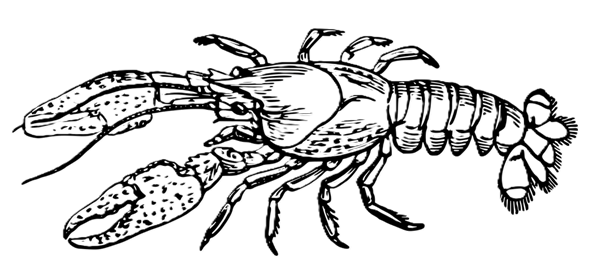Arthropods
Characteristics
- Makes up 3/4's of all animal species -total number of arthropod species is MORE than all other species combined
- Includes insects, spiders, & crustaceans
- Arthropod means "jointed foot" - all arthropods have jointed appendages
- Segmented body
- Exoskeleton for protection & support
- Exoskeleton is shed during molting
- Open circulatory system
- Compound eyes (has many individual units)
- Excretory structures called Malpighian tubules
- Wings in many groups
- Respiration using spiracles and trachae
Segmentation
More obvious in larval forms, adults have fused segments -----> Head | Thorax | Abdomen
Some have a fused head and thorax -- the cephalothorax
Taxonomy
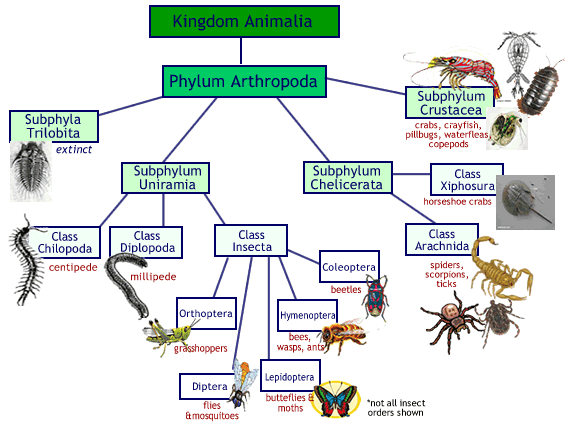
Subphylum Chelicerata
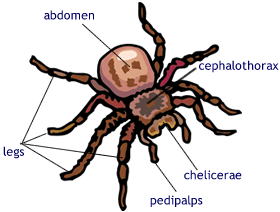
- Includes Class Arachnida) spiders, ticks, scorpions, mites and horseshoe crabs
- Have a cephalothorax (fused head and thorax) and abdomen
- No antenna
- Spinnerets in spiders make webs
- Have 6 pairs of jointed appendages:
- Chelicerae - claws or fangs (1 pair) - (spiders have venom)
- Pedipalps - used for feeding, sensing, transferring sperm (1 pair)
- Walking legs - movement (4 pairs)
Subphylum Crustacea
- Marine members include shrimp, lobster, barnacles, & crabs
- Terrestrial crustaceans called isopods (pillbugs or rollypollys)
- Freshwater members include crayfish and daphnia
- All have mandibles for chewing or tearing
- Have cephalothorax and abdomen
- Lobsters and large custraceans are called Decapods
- Barnacles are sessile (don't move)
- Have 10 pairs of jointed appendages
- Breathe through gills
Crayfish Dissection covers more on the Crayfish Anatomy
Subphylum Uniramia
- Insects and their Relatives
Includes 3 classes --- Chilopoda (centipedes), Diplopoda (millipedes), & Insecta
Class Chilopoda
- Centipedes (predators)
- Name means "100 legs"
- Flattened body
- Have 1 pair of legs per body segment
- Pincers can inject venom
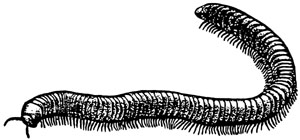
Class Diplopoda
- Millipedes
- Name means "1000 legs"
- Have 2 pairs of legs per body segment
- Rounded body
- Scavengers or herbivores
Class Insecta
- 3 pairs of legs
- 3 body parts - head, thorax, abdomen
- Wings in most
- All appendages attach to the thorax
- 9-11 segments in abdomen
- Mandibles for chewing
Insect Life Cycle
Metamorphosis - dramatic physical change
Complete metamorphosis: Larva --> pupa ---> adult (example: butterflies)
Incomplete metamorphosis: Egg --> nymph --> adult (example: crickets)
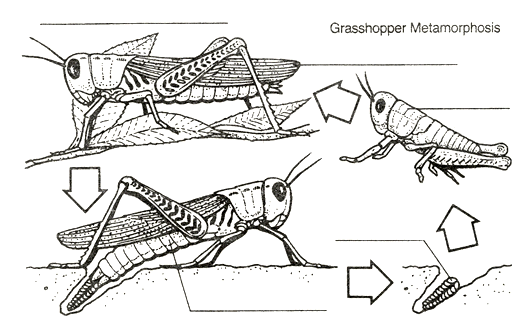
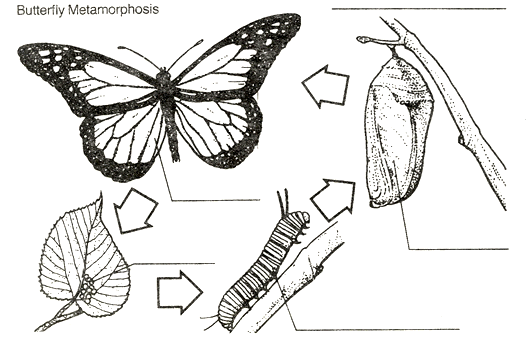
Social Insects: Honeybees (workers, queen, drones). Termites, some wasps
Queen: Lays eggs (1 queen per hive)
Drones: a few males to fertilize eggs
Workers: all infertile females
